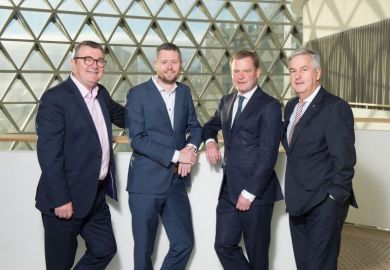Four Australian universities that are joining forces to create a “multiversity” in Sydney have pledged to put aside their rivalries to create a new kind of campus focusing on science, technology, engineering and mathematics.
The universities of Newcastle, New South Wales and Wollongong have agreed to partner with Western Sydney University to establish a joint teaching and research campus at the Western Sydney Aerotropolis development, Australia’s largest coordinated infrastructure project.
The creation of a STEM-focused university was part of the government’s commitment to the Aerotropolis project, which is centred around the construction of an airport that will serve 80 million passengers by 2056 .
Andy Marks, assistant vice-chancellor, strategy and policy at WSU, told Times Higher Education that although the details are yet to be finalised, he envisaged that the new campus would offer jointly badged degree programmes and a jointly planned research agenda alongside industry partners.
“We are going to do things differently; I don’t think you’ll see a traditional campus model, you’ll see more industry co-location and a more dispersed model across the Aerotropolis,” Dr Marks said.
Each university would retain its distinct identity but bring its particular strengths in STEM, he added.
Usually universities in Australia are highly competitive with each other, Dr Marks said, but the new collaboration was a response to “the circumstances Australia faces – economic upheaval, digital disruption and a degree of political instability – that means that we all need to do things differently: through collaboration, rather than a fight to the death”.
“I'm not going to pretend that will be easy but it benefits us all as individual institutions,” he said.
The collaboration has also been drawn up with one eye on the Australian government’s freeze on teaching funding, which has in effect capped student numbers in individual institutions.
Dr Marks said that the universities involved would be collectively lobbying the government for an exception for the multiversity from the enrolment cap, and ultimately for it to be scrapped altogether.
The universities will argue that adjusting the policy settings around enrolment will help the government meet its own objectives around economic growth and job creation in western Sydney.
The universities are also hoping that bringing together four institutions’ expertise will attract stronger collaboration from industry partners – traditionally a weak spot for Australian institutions.
The next steps are to finalise the policy framework for the new initiative and to set its key targets.
“We’ll have expectations on government policy, around exemptions [and] incentives to attract industry to us and making sure the site is fully connected with transport and infrastructure,” Dr Marks said.
“Government will say that they want firm commitments on student numbers and research output, so this is where we now sit down and work out what those targets and arrangements will be.
“The goal is to have that sorted before the end of this year; the airport is due to open in 2026 and all parties want the multiversity to become a reality by then.”
Register to continue
Why register?
- Registration is free and only takes a moment
- Once registered, you can read 3 articles a month
- Sign up for our newsletter
Subscribe
Or subscribe for unlimited access to:
- Unlimited access to news, views, insights & reviews
- Digital editions
- Digital access to THE’s university and college rankings analysis
Already registered or a current subscriber?











